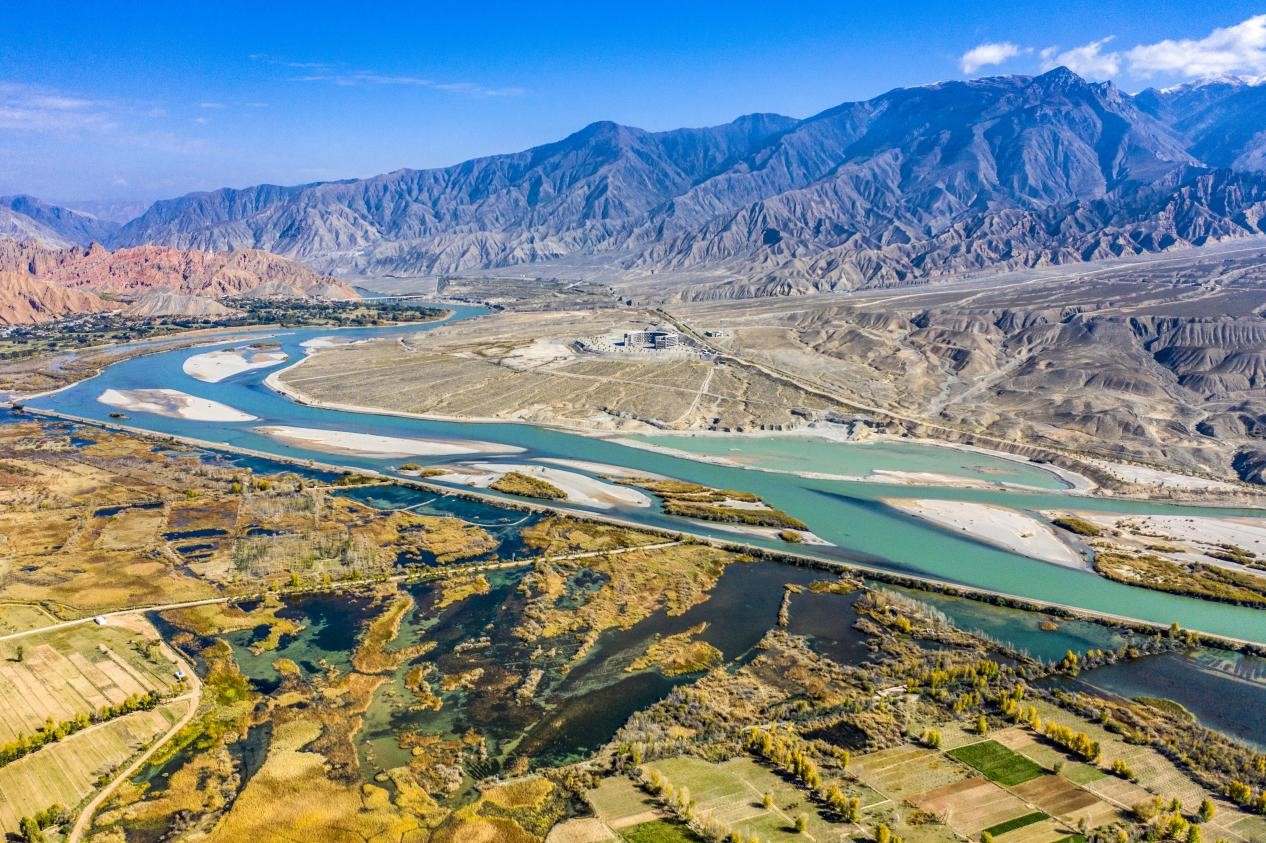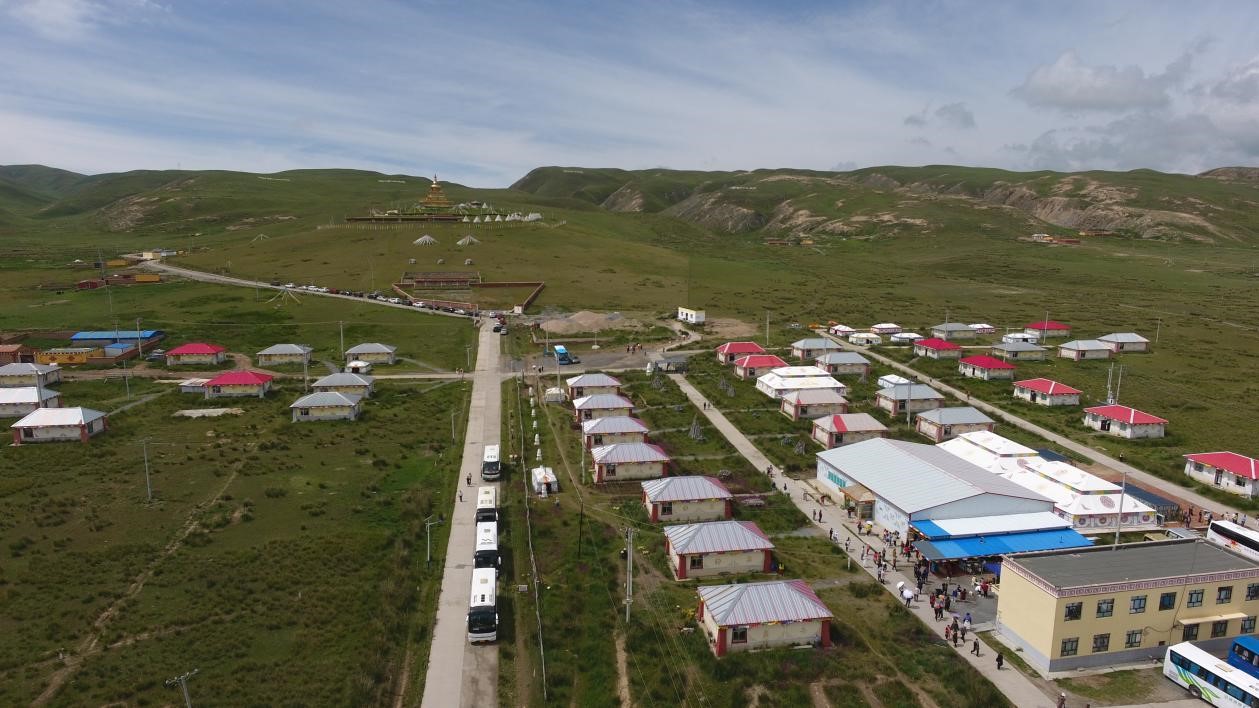PV park in NW China's Qinghai contributes to sustainable development
A piece of arid land in northwest China's Qinghai province is now turned into a vast "blue sea" made up of numerous photovoltaic (PV) panels, thanks to China's persistent efforts to promote sustainable development.

Photo taken on July 24, 2018 shows a photovoltaic (PV) power station in a photovoltaic industrial park in Delingha, Haixi Mongolian and Tibetan autonomous prefecture, northwest China's Qinghai province. (People's Daily Online/Wang Zheng)
In the past, 98.5 percent of the Talatan area, Gonghe county of Qinghai province's Hainan Tibetan autonomous prefecture was covered by sands, and almost no plant could be observed there. However, the flat land enjoys rich solar energy resources, with an average annual sunshine duration of nearly 3,000 hours.
With the rise of PV power generation, a PV industry park with the largest photovoltaic power generation capacity in the world has been built there. The park now houses 46 enterprises and has a total installed capacity of 15,730 MW. It generates 10 billion kWh of electricity a year on average, saving 3.11 million tons of standard coals and reducing 7.8 million tons of carbon dioxide emission annually.
The park was built in 2011 by Huanghe Hydropower Development Company Limited, a subsidiary of China's State Power Investment Corporation Limited.
Despite the challenges posed by sandstorms, high altitudes, and poor living conditions, the construction team proposed innovative plans and built the park with a philosophy that puts ecological conservation first. The team aims to make the park a world-class base that integrates solar power generation and ecological conservation.

Photo taken on Oct. 17, 2021 shows the Yellow River in Guide county, Hainan Tibetan autonomous prefecture, northwest China's Qinghai province. (People's Daily Online/ Xue Jun)
Green philosophy and scientific philosophy are embodied in every aspect of the park, from design to construction.
To avoid disturbance of the ground surface, the team applied mechanized piling. It made constant breakthroughs in the electricity conversion efficiency of batteries and modules and advanced intensive development of the PV power system for the green cycle of its industry chain.
To protect vegetation, the team built transmission towers on palm matting and transported steel via cableways in the air. It also built an ultra-high voltage power transmission line to send renewable electricity to other provinces.
To make PV power generation more stable on days of specific weather, the company developed a hydro-PV complementary system in collaboration with relevant scientific institutions. Now, a 330kV transmission line is linking the PV park with a hydropower generation plant 36 kilometers away.
The innovative hydro-PV system can generate nearly 1.5 billion kWh of electricity a year, which helps reduce 464,600 tons of standard coals annually, said Yao Xiaoyan, chairman of Huanghe Hydropower Development Co., Ltd.
The 345-square-kilometer solar park is like sunscreen for the Talatan area. The average wind speed in the park is lowered by 41.2 percent, and the humidity of the soil 20 centimeters under the ground surface is enhanced by 32 percent.
Salix cheilophila, Chinese cottonwood, dragon spruce and other plants are grown in the park to prevent wind and control sands, which has reduced 100 square kilometers of desertification. A grassland ranch is even built in the park.

Photo taken on Aug. 11, 2020 shows a Tibetan village in Daotanghe township, Gonghe county, Hainan Tibetan autonomous prefecture, northwest China's Qinghai province. (People's Daily Online/Meng Zhongde)
However, troubles came as the vegetation flourished. The weeds growing under the PV panels grew haphazardly and blocked the panels, thus lowering electricity conversion efficiency. The weeds also constituted a fire risk in the winter.
Instead of cutting the grass, the park invited surrounding villagers to raise their sheep in the four sheepfolds built in the park, creating a beneficial ecological industry, Zhu Mingcheng, general manager of the Hainan branch of Huanghe Hydropower Development Company Limited.
The "PV + sheep farming" model not only lowers the cost of PV enterprises, but also increases the income for local farmers and herdsmen, said Zhang Zhenfei, head of the energy bureau of Hainan Tibetan autonomous prefecture.
Sheep raised in the PV park has developed a reputation for the Talatan area, Zhang noted.
Photos
Related Stories
- China's PV exports value 28 bln U.S. dollars in 2021
- PV power stations built in SW China's Yunnan create jobs, boost local villagers' income
- Staff members of power company enhance inspection of PV power station in Qinghai
- Xinjiang PV enterprise refutes unfounded Bloomberg report on irresponsible accusation of ‘forced labor’
- China's residential PV industry expects surge in next five years
- China's newly installed PV capacity up 60 percent from a year ago
- North China's Shanxi province lifts people out of poverty through village-level PV power stations
- Chinese-built solar power stations help ‘light Africa’
- China’s PV generating capacity exceeds 100 million MWh for first time
- China leads world in new energy development
Copyright © 2022 People's Daily Online. All Rights Reserved.









